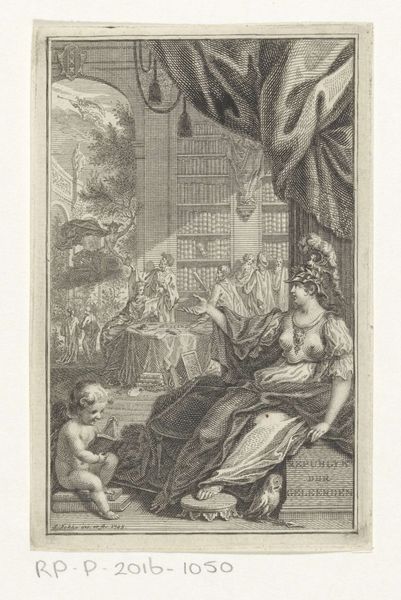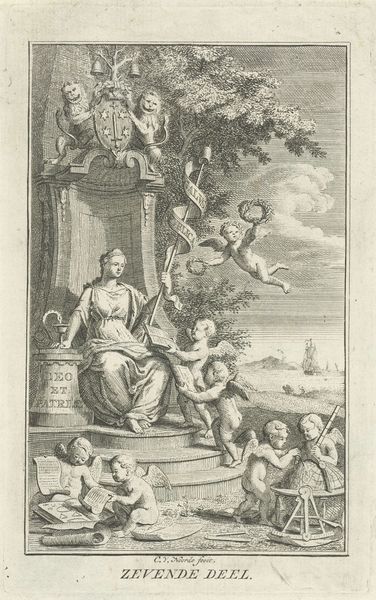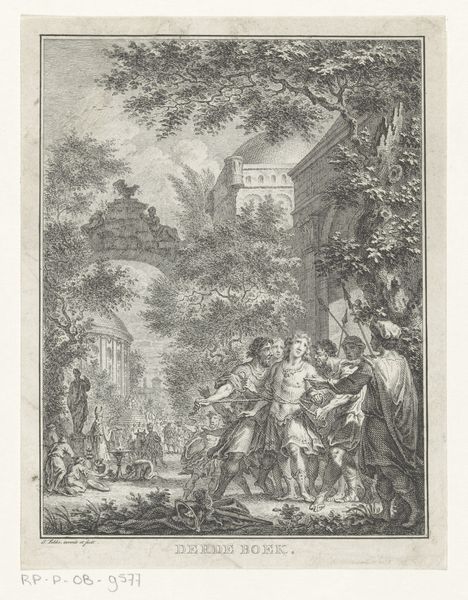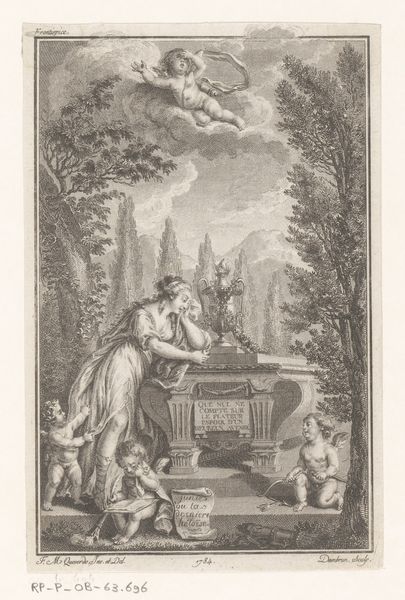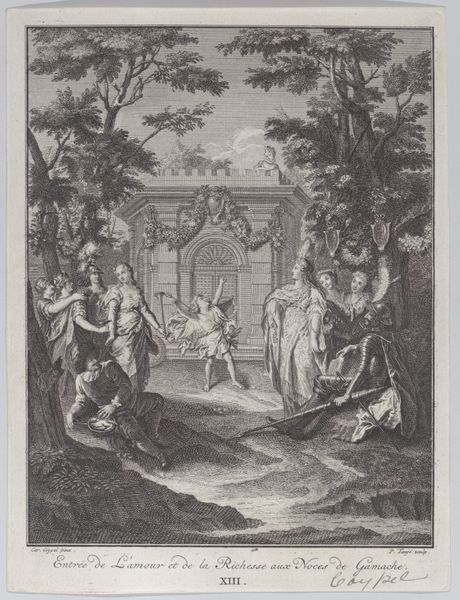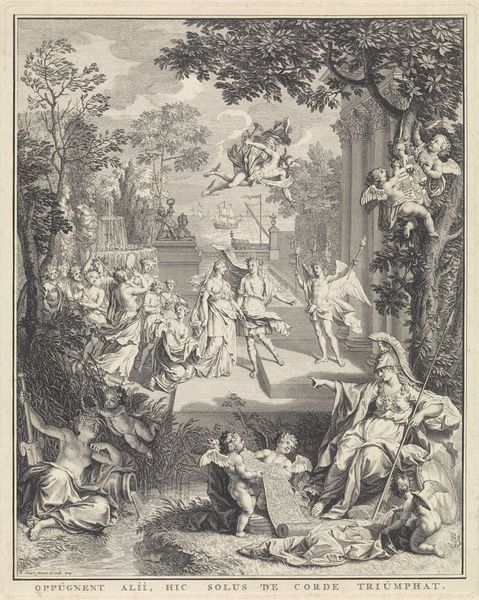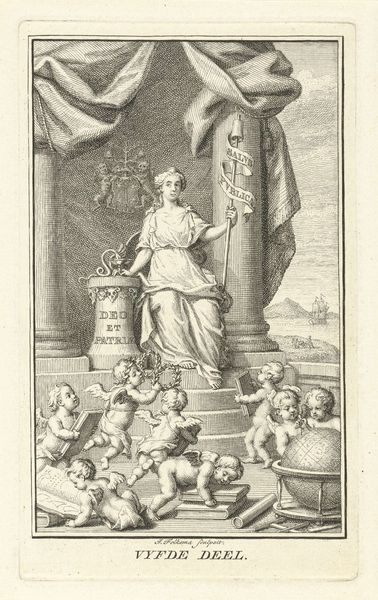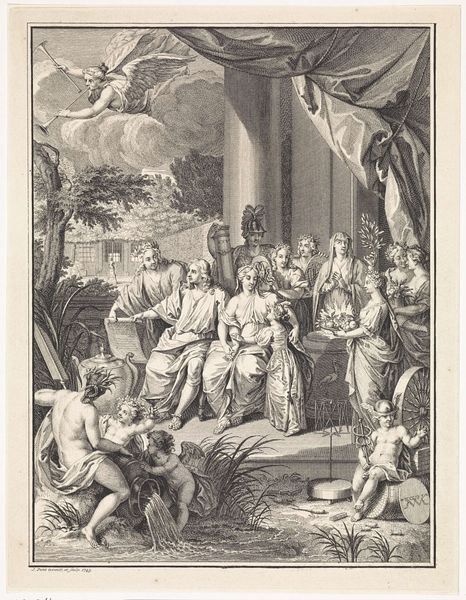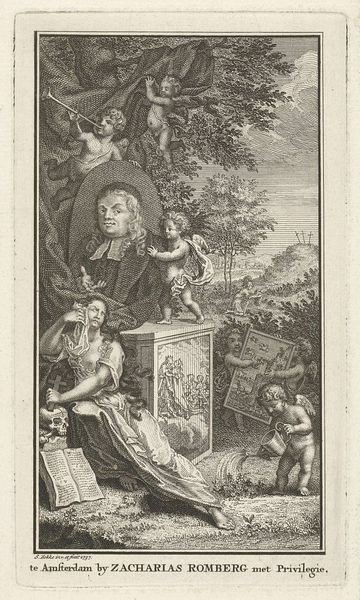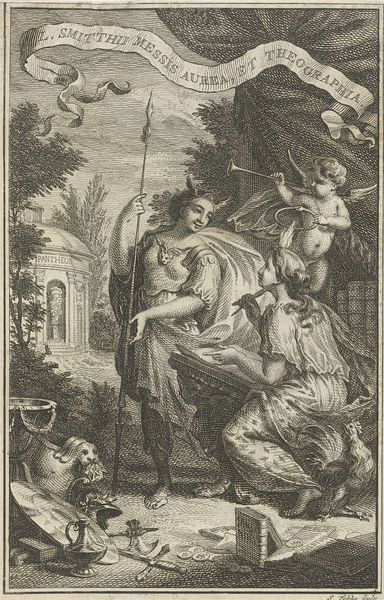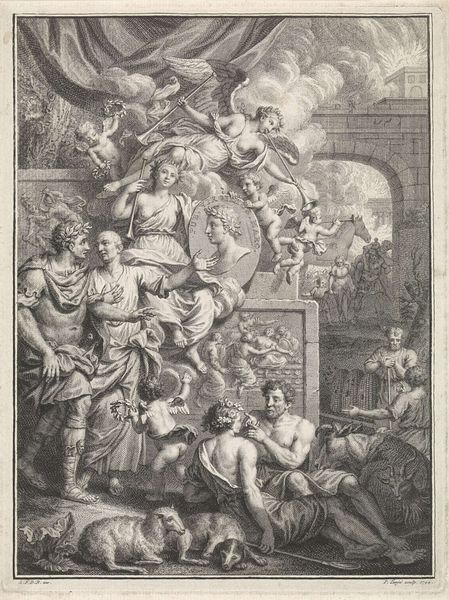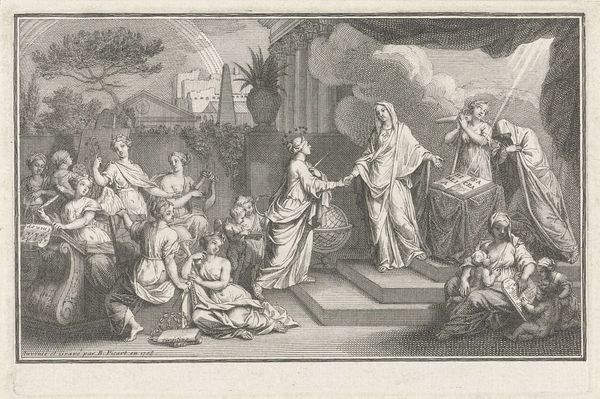
engraving
#
portrait
#
allegory
#
baroque
#
landscape
#
history-painting
#
engraving
Dimensions: height 130 mm, width 84 mm
Copyright: Rijks Museum: Open Domain
Curator: This engraving, created by Simon Fokke in 1746, is called "Minerva als patrones van wetenschap en kunsten," which translates to "Minerva as Patron of Science and Art." You can see it on display at the Rijksmuseum. Editor: My immediate impression is one of organized chaos. It's intricate, definitely Baroque, and seems to be overflowing with symbolism. Where does one even begin to unpack it all? Curator: Precisely! Fokke aimed to represent the Dutch Republic as a haven for intellectual pursuits, the Republic of Letters, as the title at the bottom denotes, “Republyk der Geleerden”. We see Minerva, the Roman goddess of wisdom and strategic warfare, presiding over this landscape. This connects the period's embrace of classical learning with contemporary cultural achievements. Editor: And look at all those scattered objects at Minerva’s feet: armor, a broken sculpture… It almost feels like a rejection of the past in favor of a new era. Curator: Partially true! Consider how the discarded armor symbolizes the transition from military prowess to intellectual strength as the nation's defining characteristic, yet the broken sculpture points to how even in progress and revolution, traces of the past will remain broken in the making. Editor: What I find fascinating is the snake wrapped around what looks like a staff above the depicted thinkers. Doesn’t the intertwined serpent typically represent medicine or healing? Why include that detail here? Curator: Aha! That’s an Ouroboros—the serpent eating its own tail—a symbol of eternity, constant renewal, and the cyclical nature of knowledge. It's also intriguing how Fokke juxtaposes Minerva, an ancient deity, with these Enlightenment ideals of reason and progress. It is like he's trying to give new meaning and life to old symbols. Editor: The way he's rendered her figure also lends a certain weight. She's strong, assertive… quite literally watching over this intellectual hubbub. Curator: The overall message here is not just about scholarship; it's about promoting and safeguarding cultural achievements. Museums at the time started to display knowledge, and images like these helped solidify that notion for the public. Editor: Seeing all the various figures in philosophical discussion really solidifies this as an attempt to legitimize their efforts, which are divinely protected and part of an ancient intellectual journey, quite a visual statement on cultural aspiration. Curator: Absolutely, understanding this engraving in its historical context unlocks a whole new level of appreciation for its multifaceted layers.
Comments
No comments
Be the first to comment and join the conversation on the ultimate creative platform.

